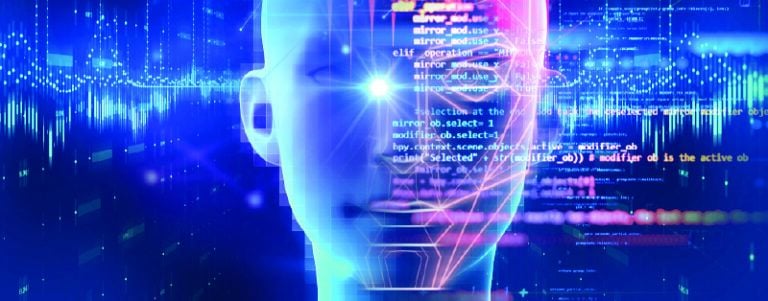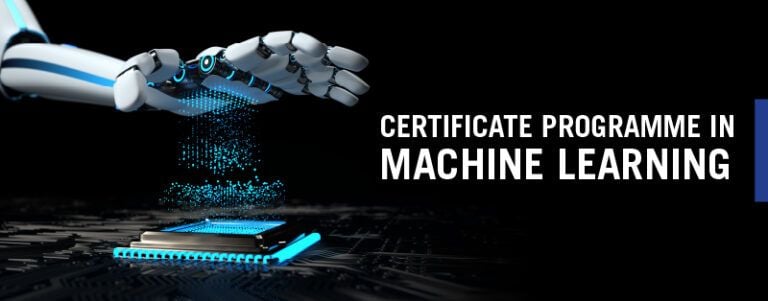10 Ultimate Deep Learning Projects with Datasets and Libraries That AI Makes Easy

A subset of machine learning, deep learning harnesses algorithms inspired by the human brain’s structure to interpret data and make decisions. In essence, these algorithms, known as neural networks, form the backbone of deep learning and learn in layers. Yet, despite its general understanding, the inspiration drawn from the human brain is limited. As Ian Goodfellow, Yoshua Bengio, & Aaron Courville—three experts on deep learning—suggest, “While it is true that deep learning researchers are more likely to cite the brain as an influence than researchers working in other machine learning fields such as kernel machines or Bayesian statistics, one should not view deep learning as an attempt to simulate the brain.”
Despite being in commercial use since 1990, deep learning experienced a surge in the mid-2000s. This stems from advancements in computing power, large datasets, and innovative techniques. Moreover, the field is poised for further growth, presenting numerous challenges and opportunities. Deep learning has already revolutionized industries, with companies like NVIDIA being a prime example. Additionally, it is pivotal in developing autonomous vehicles, enhancing medical diagnoses, and powering intelligent systems that can understand and respond to human speech. Keeping the crucial role of deep learning in mind, this blog presents both greenhorns and experts with various deep learning projects, ranging from beginner to advanced levels. We also provide a comprehensive list of resources for datasets and open-source code libraries.
10 Deep Learning Project Ideas by Difficulty Level
 1. Beginner-Level Deep Learning Projects
1. Beginner-Level Deep Learning Projects
Deep learning projects for beginners generally involve working with pretrained models and established datasets. This approach is suitable for beginners for two reasons. First, it allows you to learn and experiment with the fundamentals of deep learning mechanisms. And second, it doesn’t require too much expertise or advanced computational resources. These two reasons make deep learning projects like these ideal for deer learning newbies. And with the confidence gained with these beginner-level deep learning projects, you can gradually move ahead in the deep learning hierarchy and start to modify existing models or even create your own basic architectures. Let’s look at what beginners should tackle to get familiar with deep learning.
A. Image Classification With CIFAR-10
First, this series of deep learning projects for beginners involves deep learning with CIFAR-10, a vast dataset that contains 60,000 color images (32×32 pixels) across 10 categories. This is one of those deep learning projects for beginners where you start by loading and preprocessing the dataset and preparing it for model training. Next comes exploiting the power of transfer learning by fine-tuning a pretrained model such as VGG16 or ResNet. For instance, this involves adapting the model’s final layers to fit the specific classes of the CIFAR-10 dataset. Then, with the pretrained model as your foundation, you can train and evaluate your model using deep learning libraries like Keras or PyTorch.
Remember to monitor accuracy, loss, and other relevant metrics to assess how well your model is learning. Also, for optimal performance, remember not to hesitate to experiment with different hyperparameters, such as learning rates and batch sizes. These types of hands-on deep learning projects will solidify your understanding of deep learning principles and pave the way for tackling more ambitious deep learning projects in the future.
Uses:
- Image tagging and organization
- Object recognition in photos
B. Sentiment Analysis With IMDb Reviews
Among the deep learning projects for beginners, this one is about exploring emotions in text. In essence, deep learning projects like these entail working with the IMDb movie review dataset, which contains 50,000 labeled reviews (positive or negative). The aim here is to build a model that classifies sentiment.
Here is what you will have to do in this project. First, preprocess the text data by cleaning and tokenizing it. Prepossessing would also involve removing stop words and converting words into numerical representations. Then, you have two options. Firstly, you build your own deep-learning model from scratch. The second option is to leverage pretrained language models such as BERT, which is known for its impressive performance in NLP tasks.
Now, after training your model on the labeled reviews, make sure that you evaluate its performance based on a separate test set of reviews. In this respect, key metrics such as F1, which comprises precision and recall, will play a crucial role in revealing the accuracy of your model in classifying sentiments. In sum, deep learning projects such as this one afford you a deeper understanding of how machines can recognize, process, and interpret human language.
Uses:
- Social media monitoring
- Brand reputation analysis
- Customer feedback analysis
ALSO READ: Trend Alert: Physical AI is the Next Big Thing in A
C. Handwritten Digit Recognition With MNIST
The MNIST dataset is one of the classic deep learning projects for beginners, containing 70,000 images of handwritten digits divided into two sets: 60,000 are placed within the training set with 10,000 more images for testing purposes. This dataset, developed by employees at the US Census Bureau and school students, is so popular that it’s frequently referred to as the “hello world” of machine learning. This project serves as a foundation for image processing and pattern recognition.
So, here is the project in a nutshell. First, you load and preprocess the MNIST dataset. Then, you design and implement a Convolutional Neural Network (CNN). CNNs are a powerful architecture for image classification tasks. Also, you can use frameworks like Keras or TensorFlow to define your CNN’s layers. Then, train your CNN on the MNIST training set. In essence, this equips CNN with the knowledge of the intricate features that distinguish one digit from another. As the training of your model progresses, monitor it by evaluating its performance on the test set. Track accuracy, loss, and confusion matrices to identify areas where your model might struggle.
Uses:
- Handwriting recognition in forms
- Postal code reading
- Check processing
2. Intermediate-Level Deep Learning Projects
Now that the beginner-level deep learning projects have given you a solid foundation, it’s time to level up your skills and explore more intricate applications. So, next comes deep learning project ideas tailored for intermediate levels. With these deep learning project ideas, you would learn to build custom models, delve into generative tasks, and tackle more complex datasets.
A. Image Cartoonification With Generative Adversarial Networks (GANs)
Transforming real-life photos into their various animated versions seems fun right? So why not use this fun experience in a deep learning project idea and develop a tool of your own? This intermediate deep learning project would explore the fascinating world of Generative Adversarial Networks (GANs), where two neural networks engage in a creative duel. The generator network, fueled by deep learning algorithms, strives to produce cartoon-like images that mimic the style and features of real photographs. Meanwhile, the discriminator network acts as a discerning judge, constantly evaluating the generator’s output and providing feedback.
Through this iterative process of competition and learning, the generator refines its ability to craft increasingly convincing cartoon representations. Thus, as you embark on this project, you gain hands-on experience in training GANs, fine-tuning their parameters, and exploring different loss functions to achieve optimal results. By mastering this technique, you unlock a world of creative possibilities, blurring the lines between reality and animation.
Uses:
- Creating personalized cartoon avatars or emojis from selfies
- Developing stylized filters for social media platforms
- Enhancing visual storytelling in games and animated videos
ALSO READ: Know the 5 Best Prompt Engineering Jobs in India for Growth
B. Stock Price Prediction and Visualization Dashboard
Empower investors and traders with a deep learning-driven stock price prediction dashboard. Deep learning project ideas such as this one merge the capabilities of Dash, a user-friendly Python framework for building web applications, with sophisticated machine learning models. In this deep learning project, you develop a model that can analyze historical stock data, such as opening and closing prices, trading volumes, and technical indicators, by harnessing the power of deep learning.
In essence, your model will learn to identify patterns and correlations within this data, enabling it to make predictions about future stock prices. Thus, by integrating this model with Dash, you create an interactive dashboard where users can select specific stocks, view historical price charts, and access real-time price forecasts. This project not only sharpens your deep learning skills but also exposes you to the exciting amalgamation of finance and technology. Furthermore, it demonstrates how various aspects of artificial intelligence can be applied to real-world everyday situations like financial decision-making.
Uses:
- Financial analysts can utilize the dashboard to gain a competitive edge by identifying emerging market trends and potential investment opportunities
- Traders can leverage real-time predictions to inform their trading strategies and make data-driven decisions
- Individual investors can monitor their portfolios and make adjustments based on the data-driven forecasts
C. Anomaly Detection in Network Intrusion With Deep Learning
The objective of deep learning projects such as these is to safeguard digital landscapes. And it is executed by developing a deep learning model capable of detecting anomalies in network traffic. This is one the most interesting deep learning project ideas for the intermediate level where you get a chance to explore first-hand the critical domain of cybersecurity.
Here, you train a model to recognize patterns in network data, such as packet types, protocols, and traffic volumes. Then, by analyzing this data, your model will learn to distinguish normal behavior from unusual or suspicious activities. Suspicious activities involve a number of things, such as unauthorized access attempts, data exfiltration, or malware propagation. Leveraging deep learning’s ability to identify subtle deviations from established norms, your model can serve as an early warning system for potential cyberattacks. Through this project, you gain practical experience in building a robust anomaly detection system.
Uses:
- Enterprise networks can deploy real-time threat detection systems to protect sensitive data and critical infrastructure
- Financial institutions can detect fraudulent activity in transactions and prevent financial losses
- Industrial control systems can be monitored for potential attacks that could disrupt operations or compromise safety
ALSO READ: 5 Important Reasons Why Diffusion Models Boost Machine Learning Workflows
3. Advanced Deep Learning Projects

Commenting on his success as a musician, Chet Atking once commented, “A long apprenticeship is the most logical way to success.” Overnight mastery over one’s craft is the stuff of fiction. So, if the beginner- and intermediate-level deep learning project ideas were the period of apprenticeship, it is time to proceed to reaching the core of deep learning and mastering it thoroughly in all its complexities and nuances. To prepare you for this journey, the following sections present four advanced deep learning projects. These projects often demand a deeper understanding of neural network architectures, extensive data preprocessing, as well as significant computational resources. Moreover, these projects push the boundaries of what’s possible with artificial intelligence, making them exciting challenges for experienced practitioners.
A. Self-Driving Car Simulation With Deep Reinforcement Learning
Try to build a virtual world and train a self-driving car to navigate it using deep reinforcement learning. These types of advanced deep learning projects integrate various disciplines, including computer vision, robotics, and decision-making algorithms.
Here, your model acts as the car’s “brain”. It will perceive its environment through simulated cameras and sensors, much like a real vehicle would. Then, it will learn to interpret critical information such as traffic signs, road markings, other vehicles, and pedestrians. Next, guided by reinforcement learning, your model will make real-time decisions on how to steer, accelerate, and brake. Ultimately, your self-driving car will aim to navigate safely and efficiently within the simulated environment, paving the way for real-world autonomous vehicles. This project not only provides a glimpse into the future of transportation but also allows you to experiment with deep reinforcement learning. It’s a powerful technique for training agents to interact with their environment and achieve specific goals.
Uses:
- Testing and refining self-driving car algorithms in a risk-free, simulated environment before deploying them on real roads
- Developing virtual training grounds for autonomous vehicles to expose them to a wide range of scenarios and improve their decision-making capabilities
- Researching novel approaches to autonomous navigation, such as path planning, obstacle avoidance, and traffic prediction
B. Reinforcement Learning for Game Playing
In this kind of advanced deep learning project, you design an intelligent agent that learns to play games like Go and chess. Moreover, you can also create video games like Dota 2. Here, your objective is to train your agent to interact with the game environment, taking actions based on its current state. Subsequently, it receives feedback in the form of rewards or penalties which then allows it to evaluate the effectiveness of its decisions. Thus, through continuous interaction and learning, the agent gradually develops sophisticated strategies to maximize its performance. And, in some cases, it can even outperform human players. Google DeepMind’s AlphaGo is a prime example of this extreme possibility, where the program defeated three-time European champion Fan Hui.
Uses:
- Developing AI opponents for video games that can provide challenging and engaging gameplay experiences for human players
- Training robots to perform complex tasks in real-world environments by learning through trial and error
- Researching new approaches to decision-making and strategy optimization in various fields, including finance, logistics, and healthcare
ALSO READ: 7 Remarkable Types of AI and How They are Making a Difference in the World
C. Natural Language Processing (NLP) for Machine Translation or Text Summarization
In advanced deep learning projects of this type, your task involves machine translation projects. For instance, here your model learns to accurately translate text from one language to another, much like Google Translate does. However, if a tool like Google Translate doesn’t suit your preference, you can focus on a different set of tasks. For instance, consider text summarization, where your model learns to condense lengthy documents into concise summaries. This is similar to how news aggregators display snippets of articles. Despite differences in objectives, both of these projects involve training models on massive text datasets and utilizing sophisticated architectures like transformers. Moreover, these advanced deep learning projects give you the opportunity to grapple with the nuances of grammar, syntax, and semantics. Thus, by delving into NLP, you gain a deeper understanding of how machines can process and interpret human language.
Uses:
- Building translation tools that enable seamless communication across different languages, fostering international collaboration and understanding
- Creating text summarization tools that help individuals quickly grasp the key points of articles, reports, or research papers, saving time and increasing productivity
- Developing conversational AI systems, such as chatbots and virtual assistants, that can understand and respond to natural language queries, providing information and assistance to users
D. Deepfake Detection Using Deep Learning
In the post-truth era, misinformation is abundant, and technologies like Deepfake pose a significant threat to the integrity of digital media. Deepfakes manipulate videos or fabricate images using techniques like Generative Adversarial Networks (GANs).
For instance, a recent Deepfake video of the renowned Indian actress Rashmika Mandanna went viral, causing concern about this technology’s misuse. However, deep learning projects can be used to combat the misuse of AIs.
However, you can actively combat the spread of misinformation by developing a model to detect such Deepfakes. In order to do this, you have to start by gathering a dataset of real and Deepfake media. For instance, this would include multiple images and videos; you then need to train a model to distinguish between them. This involves analyzing subtle inconsistencies, artifacts, and patterns that often betray the artificial nature of Deepfakes. Additionally, your model might employ techniques like facial landmark analysis, texture analysis, or even audio analysis to spot inconsistencies.
By developing robust Deepfake detection algorithms, you contribute to the fight against misinformation. Not only that, but you also protect individuals from identity theft and reputational damage and ensure the authenticity of digital media. Given the potential problems associated with Deepfake, this project is one of the more relevant and important advanced deep learning projects today.
Use Cases:
- Social media platforms can use Deepfake detection to filter out harmful or misleading content
- News organizations can verify the authenticity of video evidence
- Law enforcement agencies can use Deepfake detection in investigations
ALSO READ: What is Deep Learning? Applications and Emerging Trends in 2024
Benefits of Deep Learning Projects
1. Solidifying Theoretical Knowledge Through Practical Application
Deep learning projects bridge the gap between theory and practice, breathing life into abstract concepts. As you navigate the complexities of basic and intermediate deep learning projects and slowly learn to tackle advanced deep learning projects, you reinforce your grasp of neural networks, activation functions, and optimization algorithms. In essence, each line of code and model iteration solidifies your theoretical foundation, transforming textbook knowledge into real-world skills.
2. Building a Strong Portfolio to Showcase Skills
A portfolio brimming with diverse deep learning project ideas speaks volumes about your passion and expertise. Thus, by documenting projects and highlighting your solutions, you create a tangible showcase of your problem-solving abilities and technical prowess. So, whether you are seeking career opportunities or aiming to establish yourself as a deep learning enthusiast, a compelling portfolio of deep learning projects opens doors to new possibilities and collaborations.
3. Fostering Creativity and Innovation in Problem-Solving
Deep learning projects empower you to think outside the box and unleash your creative potential. As you encounter challenges and experiment with different approaches, you cultivate a mindset of innovation and adaptability. The ability to devise unique solutions and apply deep learning to novel problems becomes a valuable asset in your toolkit, propelling you toward groundbreaking discoveries and advancements in the field.
Finding Your Project
Now that your head is full of ideas for deep learning projects, you need access to datasets and open-sourced code libraries. And there are numerous websites and portals to help you with this. Presented below is a curated list of sites where you can find everything you need to embark on deep learning projects.
1. For a diverse range of data sets, you can use these websites:
A. https://www.kaggle.com/datasets
B. https://paperswithcode.com/datasets
C. https://encord.com/blog/open-source-datasets-ml/’
D. https://www.quandl.com/search
F. http://archive.ics.uci.edu/ml/index.php
G. https://cloud.google.com/bigquery/public-data
2. For open-sourced code libraries, look up the websites listed below:
A. https://github.com/gitroomhq/awesome-opensource
B. https://en.cppreference.com/w/cpp/links/libs
C. https://cs.opensource.google/
Deep learning projects, of course, involve a lot of technical aspects. However, only grasping the technical aspects is not enough. Rather, to keep things interesting, it’s beneficial if you find your own niche. Hence, choosing a deep learning project that aligns with your personal interests is key. So, what is it that intrigues you? Music? Misinformation plaguing the media? Or is it finance? No matter where your interests lie, it’s very probable that there is an opportunity to take up a deep learning project in your domain of interest. Deep learning is a versatile tool that can be applied to7 various domains. And by aligning your projects with your passions, you will not only enjoy the learning process but also create projects that have a meaningful impact.
ALSO READ: How to Become an AI Scientist? Learn Top 8 Skills for This Role
Beyond the Code
Remember, deep learning projects extend beyond the code itself. Hence, documenting your journey is crucial for showcasing your skills and sharing your knowledge with others. Here are some tips to help you in your deep learning journey.
- Keep a detailed record of your process, including the challenges you faced, the solutions you implemented, and the results you achieved, as this documentation would as a valuable resource for your future reference
- Consider sharing your work with the vibrant deep-learning community
- Engage in online forums, participate in open-source projects, or present your findings at conferences or meetups
As AI becomes one of the key components and drivers of Industrial Revolution 4.0, it is high time that you align your career with the AI boom and learn various aspects of this advanced technological development. And deep learning figures as one such vital aspect of AI. This blog has helped you familiarize yourself with a diverse range of deep learning project ideas of differing levels of complexity. Each project offers a unique opportunity to apply theoretical knowledge, build practical skills, and contribute to the ever-evolving field of artificial intelligence. So, what are you waiting for? Find a project that resonates with your interests and aspirations and embark on your deep learning journey today.
But wouldn’t this journey be more engaging and exciting if you had a mentor and access to the latest learning modules from the comfort of your home? Then consider joining Emeritus’ artificial intelligence courses and machine learning courses, and immerse yourself into the horizon of AI.
Write to us at content@emeritus.org






